Exploring the UNESCO Towns of Ragusa and Modica, Sicily

In 1693 a massive earthquake destroyed most of south-eastern Sicily, including over 70 towns and villages including Ragusa, Modia, Noto, Syracuse, and Catania, all of which we visited (even though our trip to Catania was just to go to the airport!) on our Sicilian road trip. What followed such destruction was a massive re-building plan which created what are now several UNESCO-recognised towns all build uniformly in the new-Sicilian Baroque style. They’re a lovely part of Sicily to explore, and Ragusa makes a fantastic base to do so.
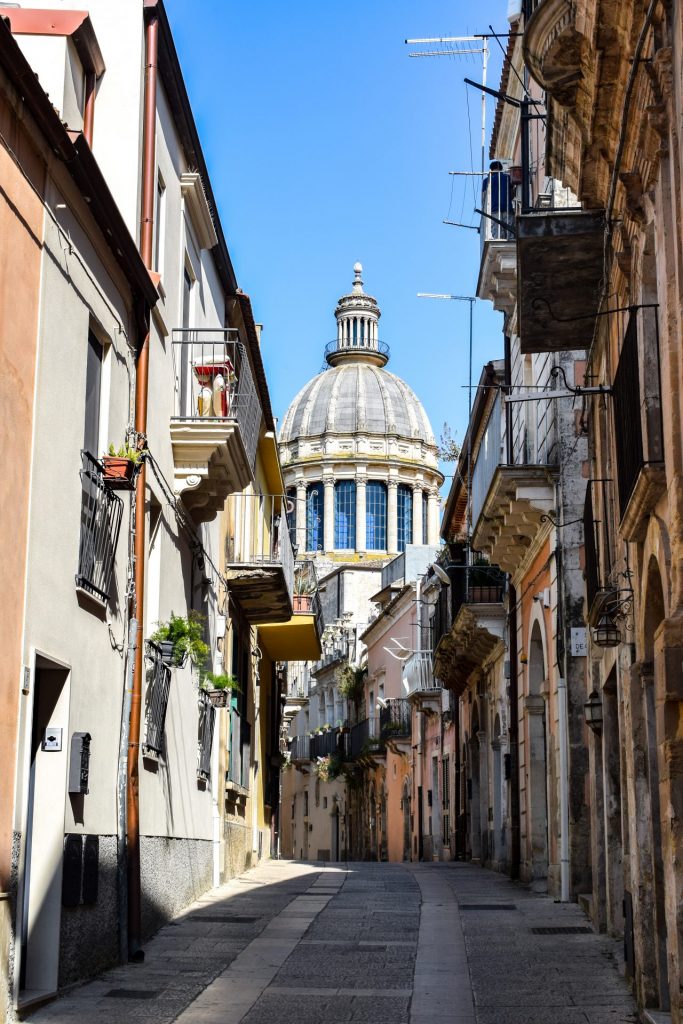
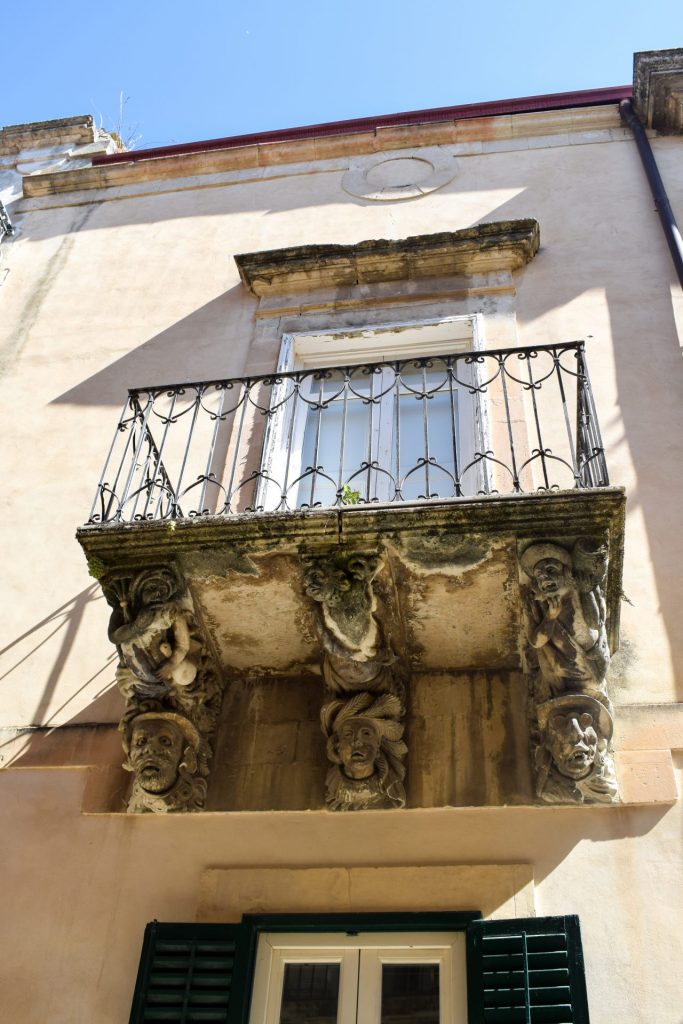
Where We Stayed
Ragusa is split into two halves: Ragusa, and Ragusa Ibla. Whilst they were both rebuilt at roughly the same time, Ragusa is the ‘new’ town, and Ragusa Ibla is built on the site of what was the existing town, each one facing each other across the valley. Be aware when you pick somewhere to stay in Ragusa (or even if you’re just visiting for the day), Ragusa Ibla is a ZTL zone, which means driving is limited at certain times, as is parking for non-residents, so be sure to choose a hotel that takes care of your car for you if you’re driving there.
No pictures again (it was a very comfortable hotel with a lovely finish, it was just not particularly unique unlike Baglio Sorìa or Mandranova!) but I can still highly recommend Locanda don Serafino in Ragusa Ibla where the staff are lovely, the breakfast good in their dining room across the street, and where our arrival, car drop off and return was all super smooth and sorted by Whatsapp! The location was great, not in the middle of Ragusa Ibla so quiet, but still an easy, short stroll down to the main street. Literally our only complaint was it was not clear when we booked that their restaurant is not in the hotel, but a 10 minute walk away!
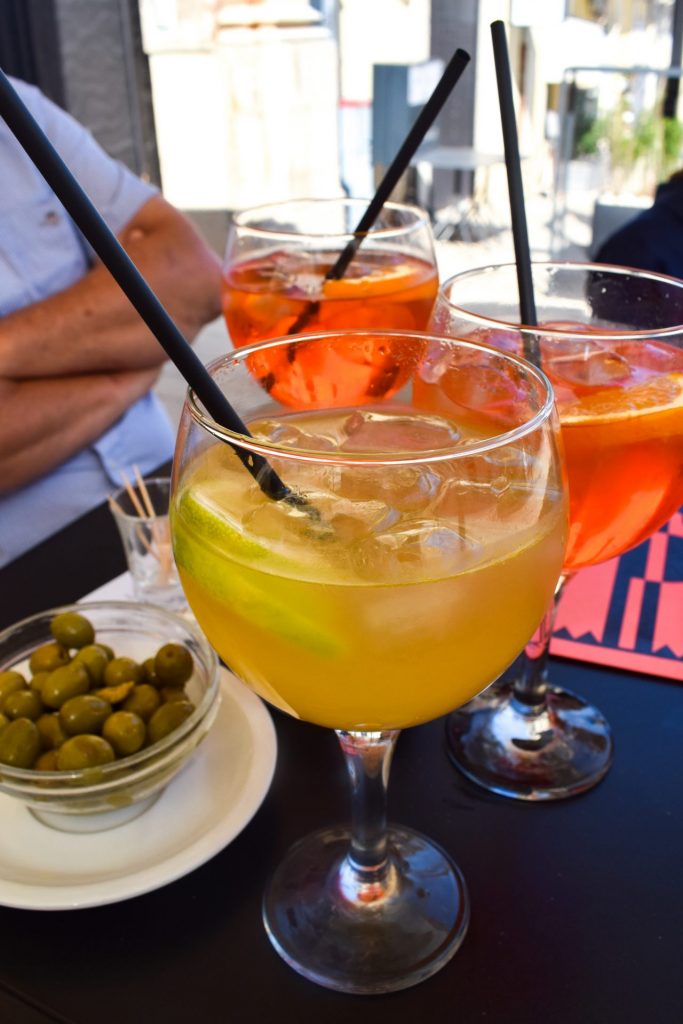
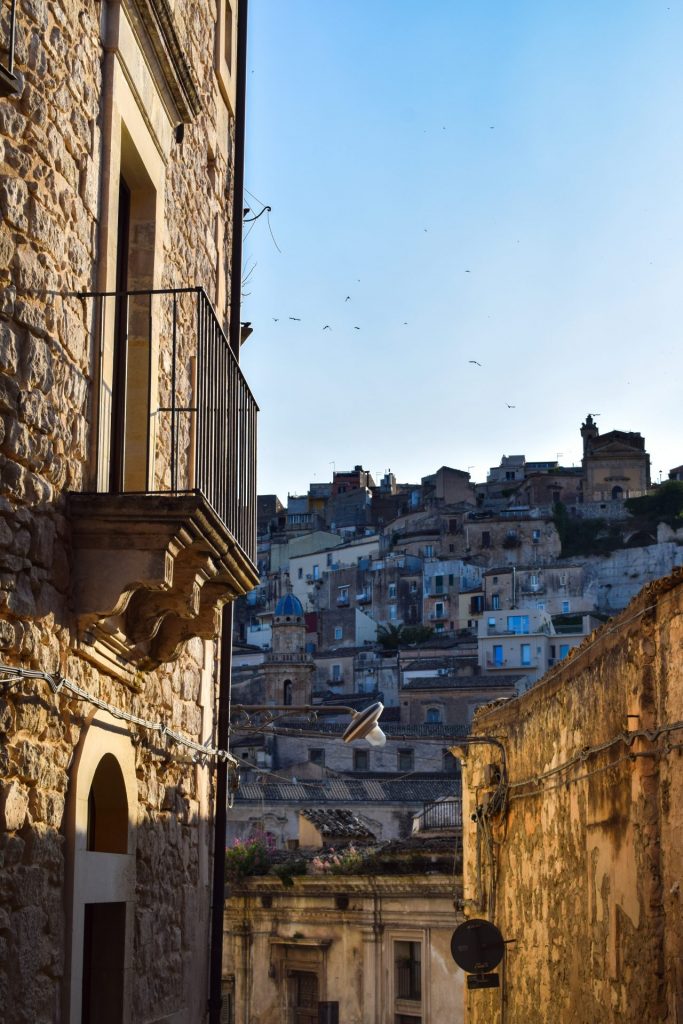
What We Did
We arrived in Ragusa mid-afternoon, so took the time before dinner for a stroll down to the Piazza Duomo for a relaxing few spritz. Stop at Officina 31 after a long drive to Ragusa; the spritz are great and they also offer street food if you missed lunch (more on Ragusa’s traditional street food dishes below!)
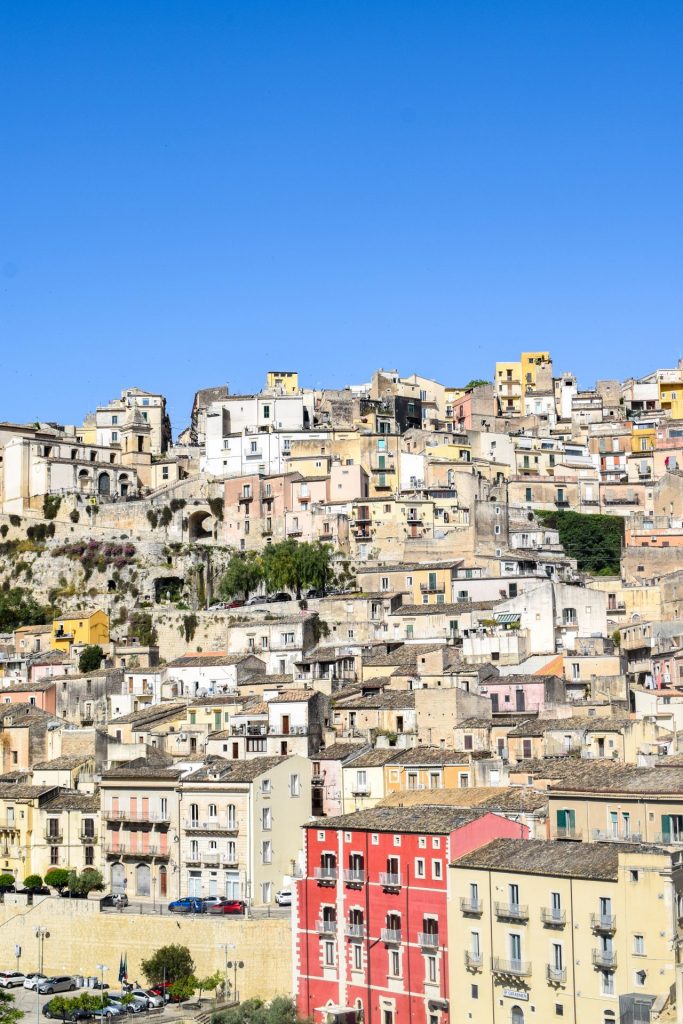
The next morning we met up with another fantastic – Original Travel-booked – local guide Sabine for a walking tour of Ragusa, and nearby town Modica. Starting in Ragusa Ibla, we looked back on Ragusa as we learnt all about the earthquake before setting off into the town.
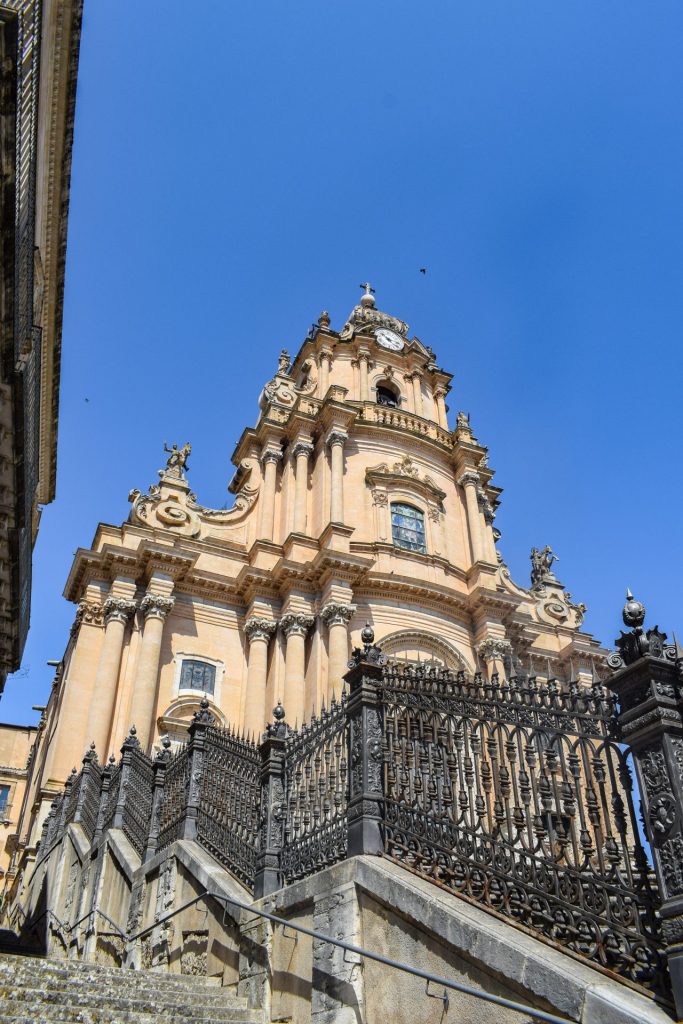
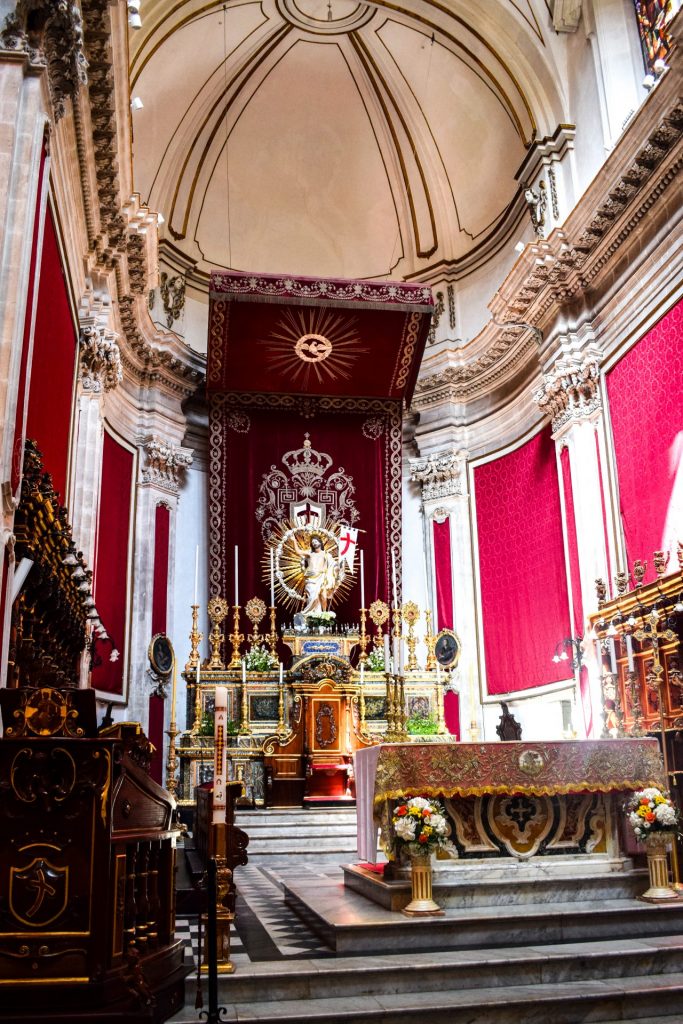
Duomo di San Giorgio
Duomo di San Giorgio is the main church in Ragusa Ibla dedicated to St. George, but one thing you’ll notice about all the UNESCO-recognised towns in the area is there are so many churches, big and small, private and public. After the earthquake, wealthy families were desperate to give money for churches to be built, hoping it would protect them against future disaster, even if the area did not even need that many churches. This is why from Ragusa to Ortigia, the island off Syracuse it might feel like literally every time you turn the corner there is another church!
Duomo di San Giorgio is a good place to start (especially as it is free to visit!) as it really gives an idea of how these churches were decorated at the time: lots of marble from different parts of Italy (including a local one which appears black because it is soaked in underground oil, which is fine inside the church, but when it was used outside it turned white in the sun), lots of white with gold painted detailing. The red inside the church was originally festival hangings, but it was so striking in tourists photos they’ve kept it year-round to pull in visitors. I can’t complain, a tourist there myself.
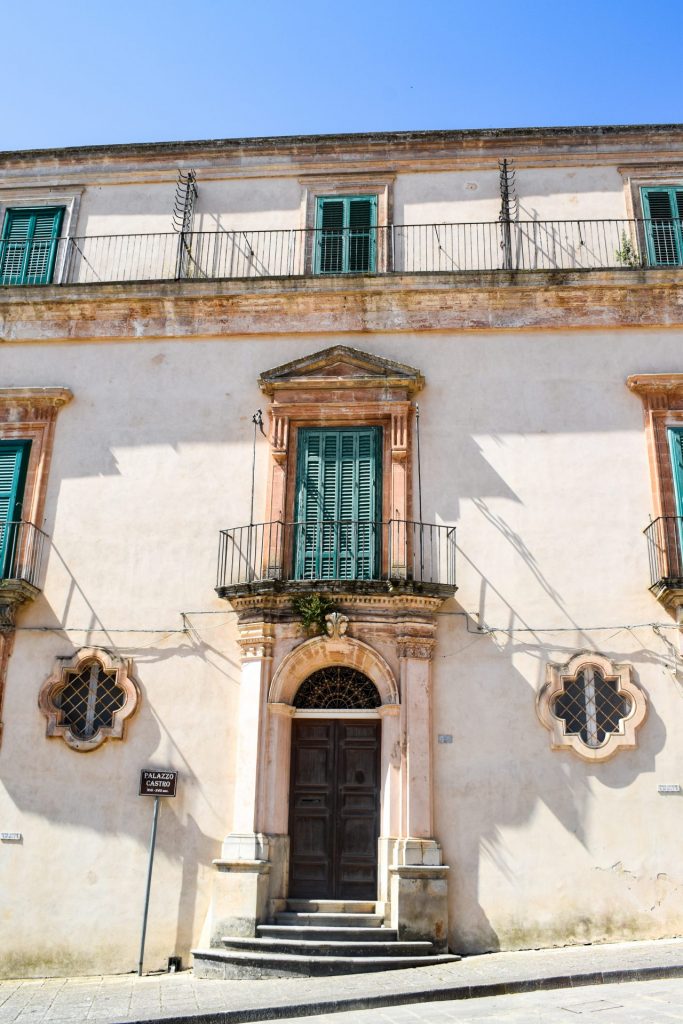
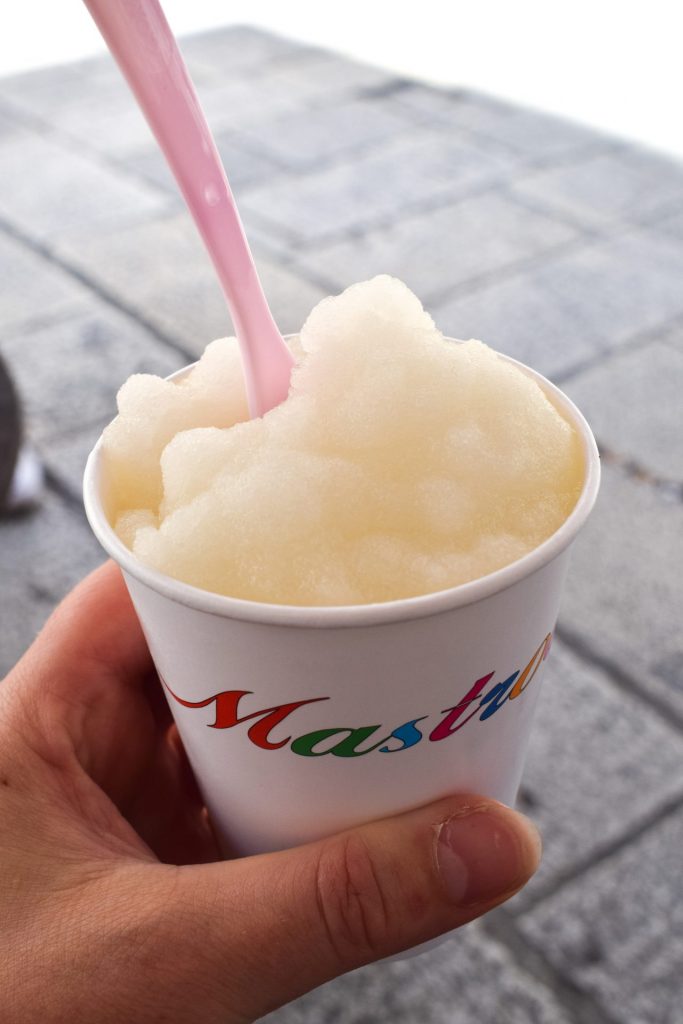
Granita from Mastrociliegia
Continuing through the streets of Ragusa Ibla, Sabine took us for a stop off at Mastrociliegia, which is a spot worth bookmarking as they do both fantastic granita and gelato. We didn’t have time to go, but also bookmark Gelati Divini, another of her recommendations back on Piazza Duomo in front of Duomo di San Giorgio.
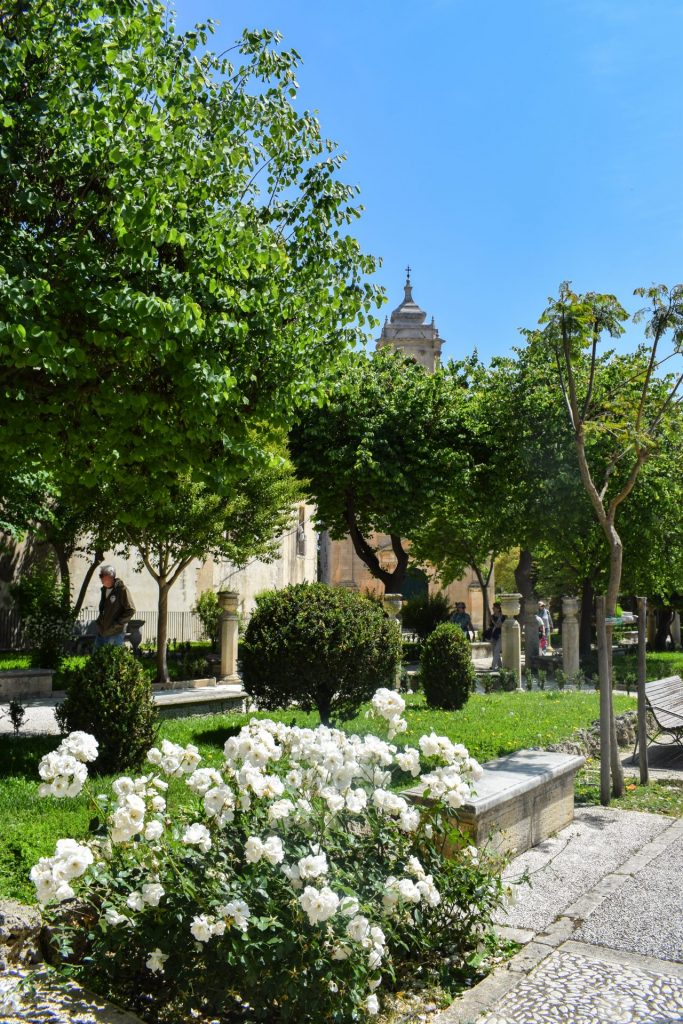
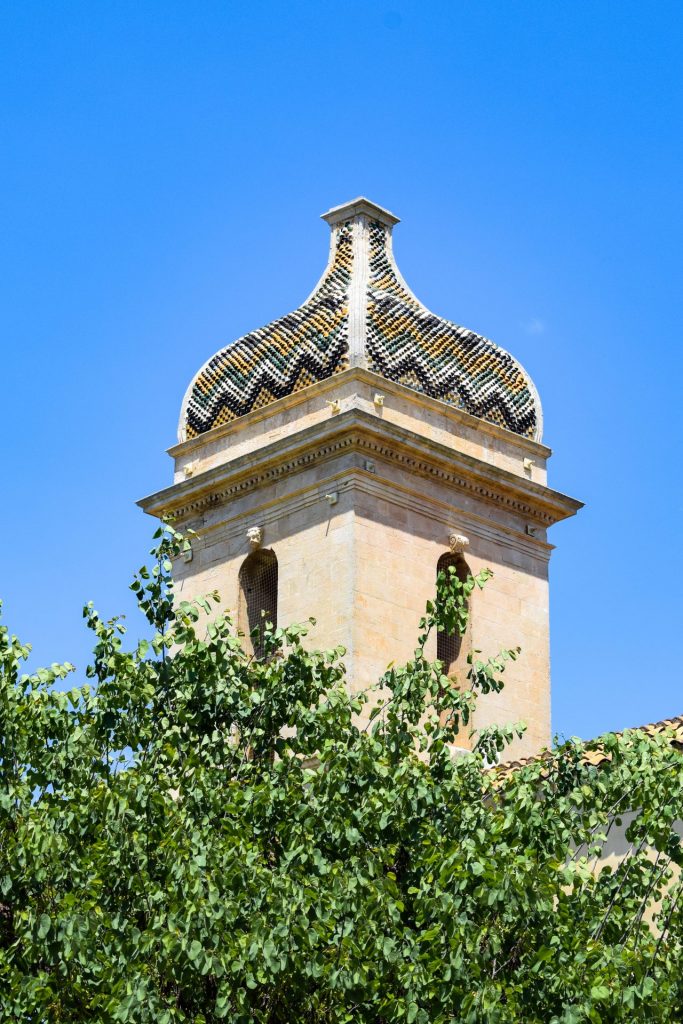
Giardino Ibleo
Giardino Ibleo are a lovely oasis of public gardens at the eastern tip of Ragusa Ibla, and as you’ll see below, boast wonderful views out into the countryside, another church and a convent. Somewhere else that we did not manage to make it to but which came highly recommended was Cenobio, the restaurant in the convent which overlooks the gardens.
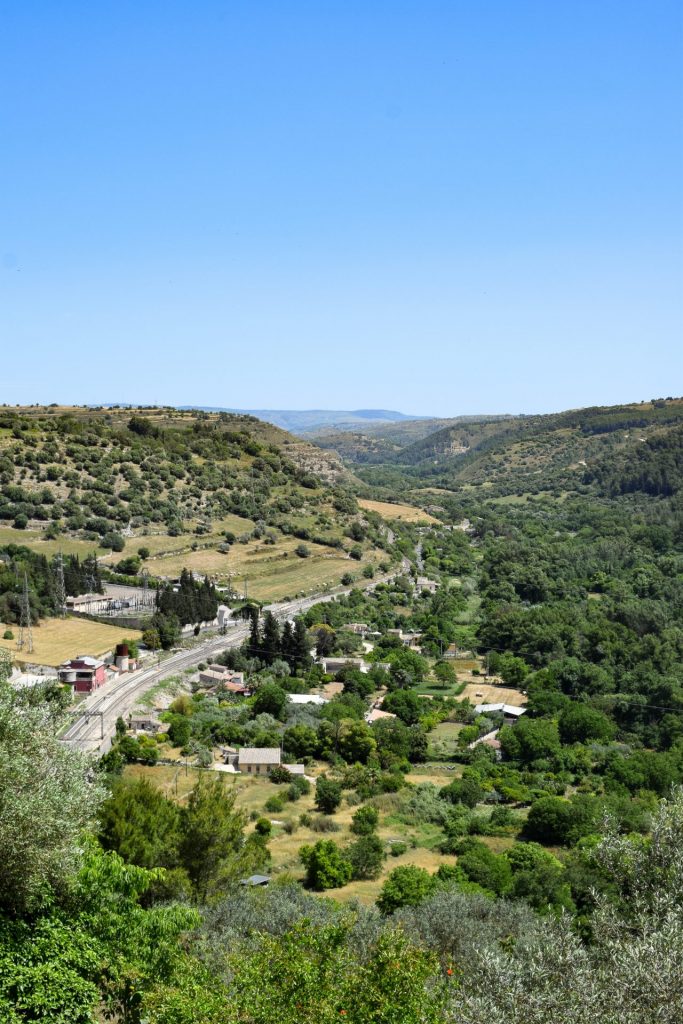
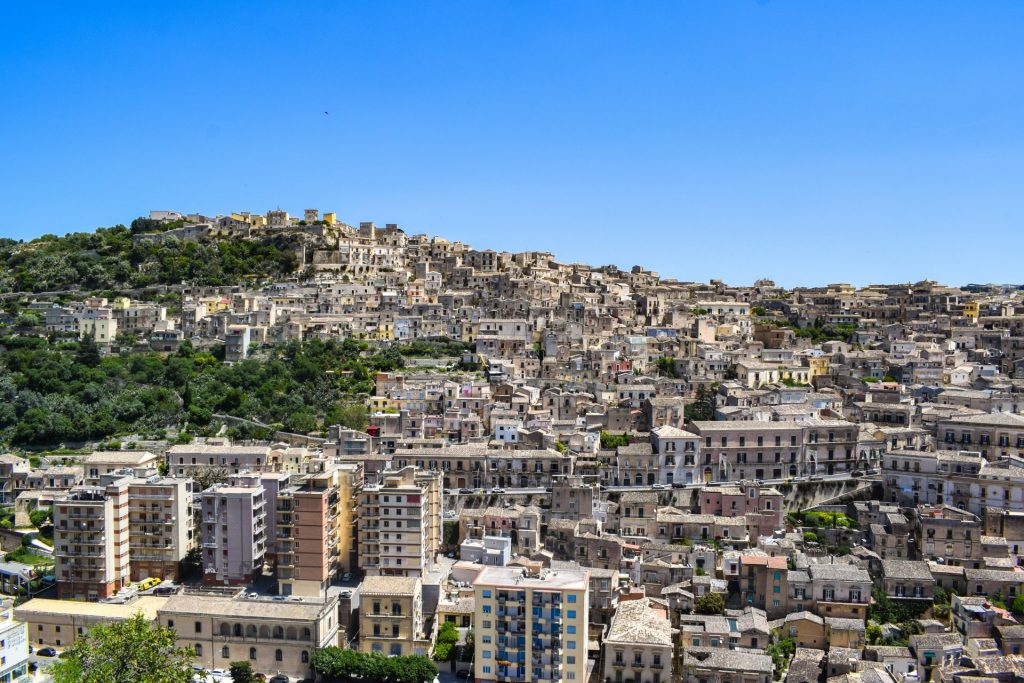
Leaving Ragusa behind us taking the winding roads through the hills, we stopped off by the side of the road to take in Modica in all it’s glory before we drove into the town itself. Vibe-wise it is a lot busier than Ragusa (and unlike Noto which we also briefly visited, you can actually park!!) so perfect for a day trip, though if you’re staying in the area I think Ragusa Ibla was a much better shout as it was much calmer and more relaxed to return to in the evenings, with a great food scene.
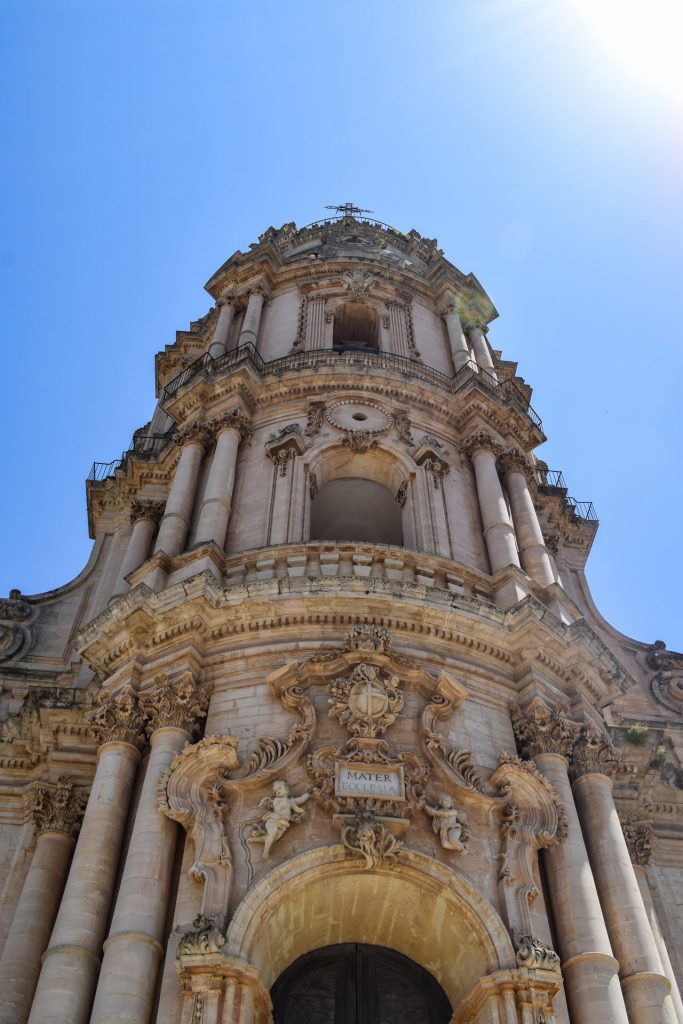
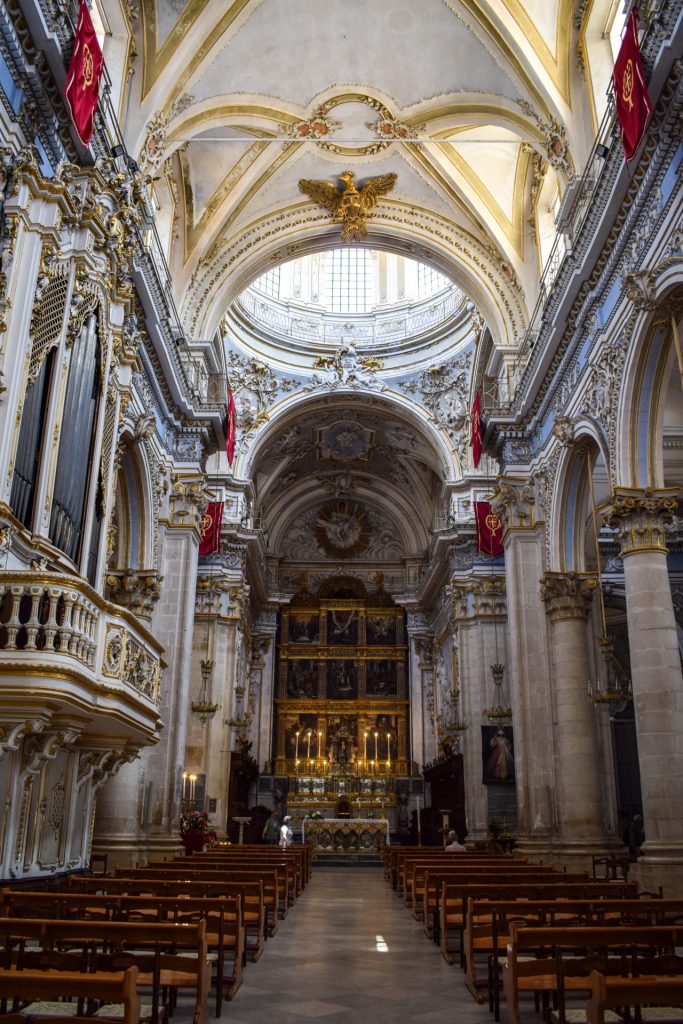
Duomo di San Giorgio
The Duomo di San Giorgio, reached by 250 steps winding through the town is very similar to Duomo di San Giorgio in Ragusa Ibla (well, they would be!) but with a lot more gold detailing. If you only manage to visit one of the towns, again it is not to be missed to get an idea of the style everything was rebuilt in after the earthquake. Also, don’t miss at the front of the church the solar clock which marked the time and date with a small beam of light coming through the cathedral roof, landing on markers inlayed into the floor. We also saw one in Palermo Cathedral!
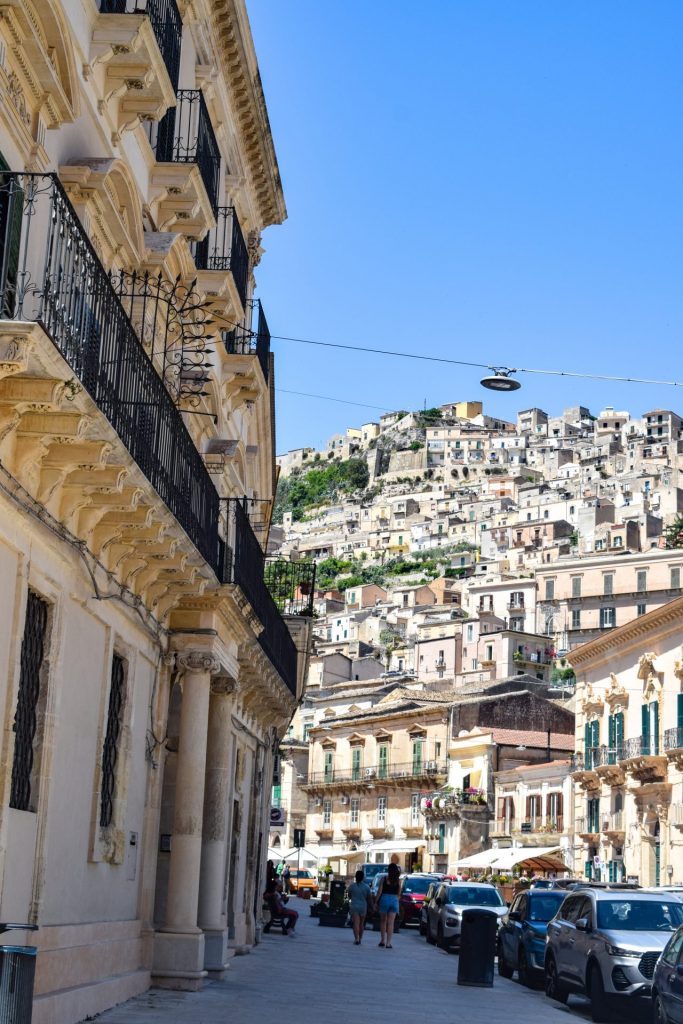
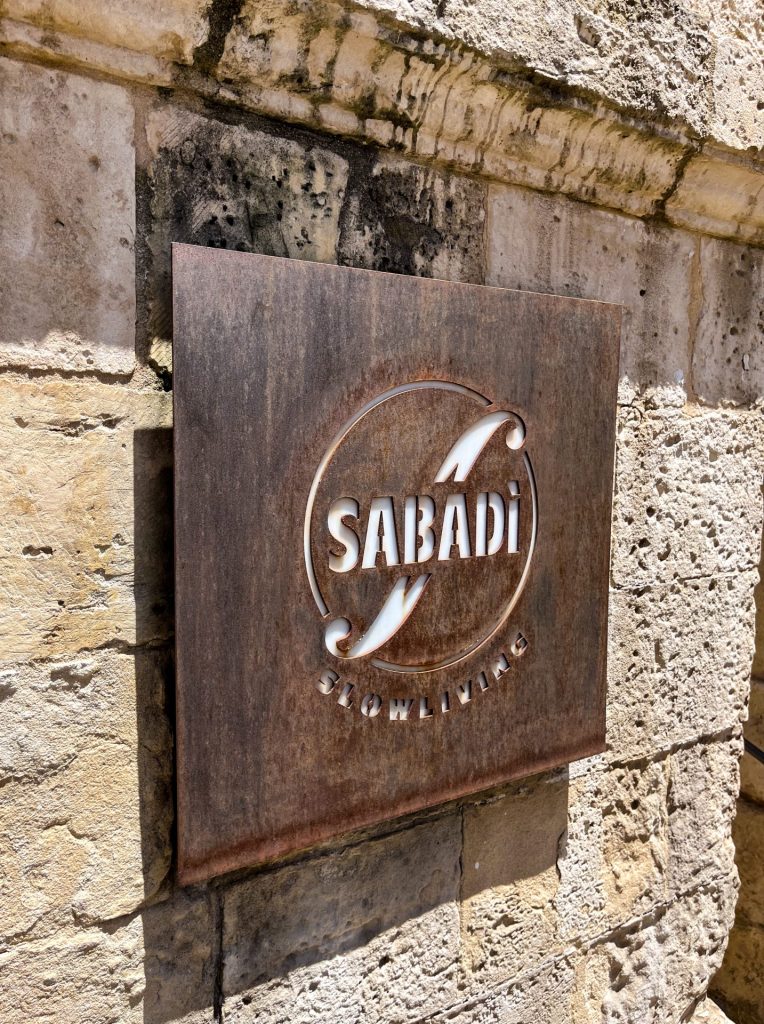
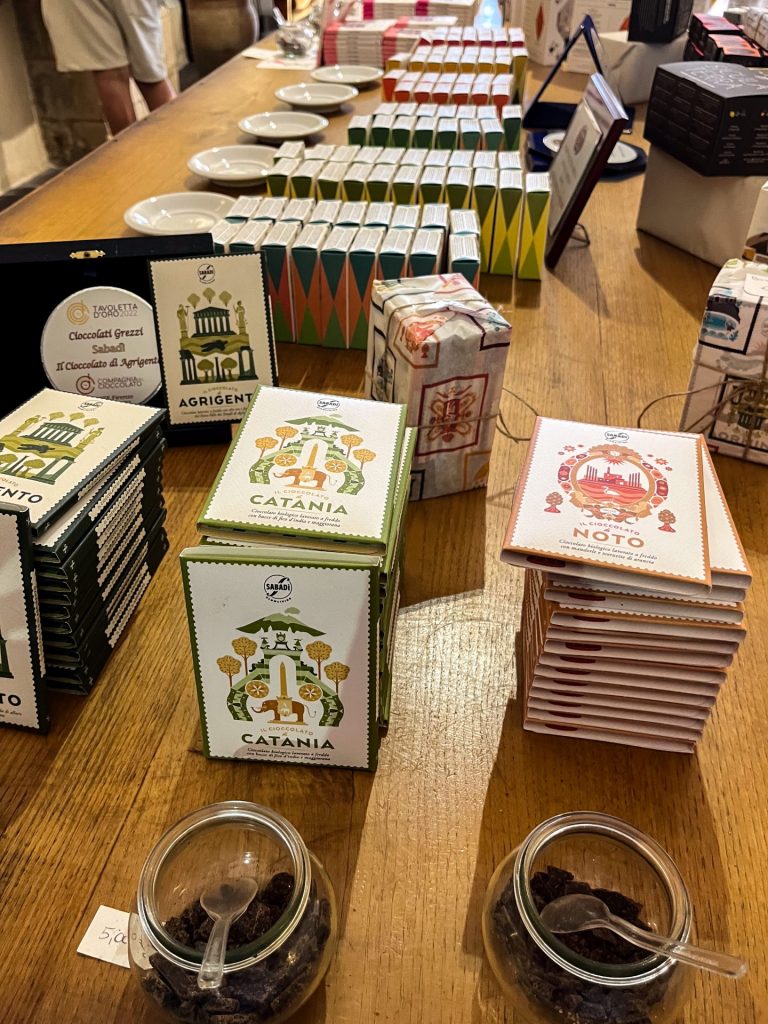
Sabadi Chocolate
Next to Duomo di San Giorgio is the Sabadi chocolate shop, just one of the many chocolate shops Modica is famous for where Modica’s special chocolate is made. We’re used to chocolate made with heat which is completely smooth; Modica’s chocolate is cold-pressed, which gives it the lovely yet unusual texture that you can still taste the sugar crystals as it melts on your tongue. Unusual, yet delicious.
Another good reason to visit Sabadi is you can taste before you buy (though they recommend that you don’t taste more than six flavours in one go or else they’ll all start merging into each other!) For a good way to experience the chocolate I recommend their muscovado sugar bar (which you can get online), and for something a bit more unusual their bars that reflect the flavours of Sicily’s regions; we brought their Agrigento bar home with us, beautiful flavoured with extra virgin olive oil and bay leaves.
If you don’t manage to make it to Modica but Ortigia is on your list, they have a shop there too!
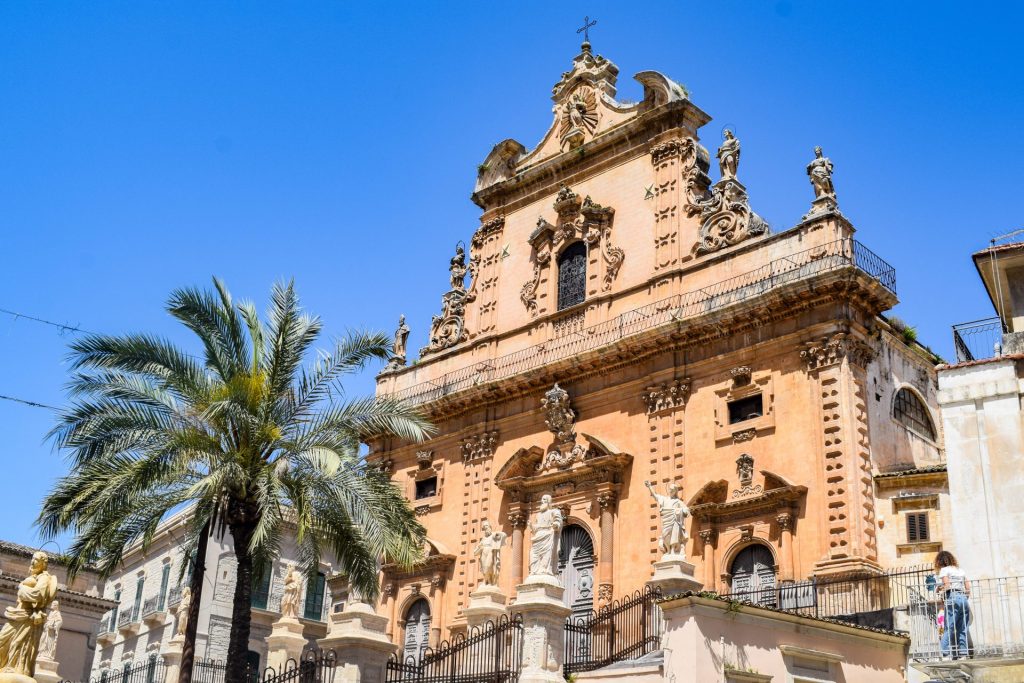
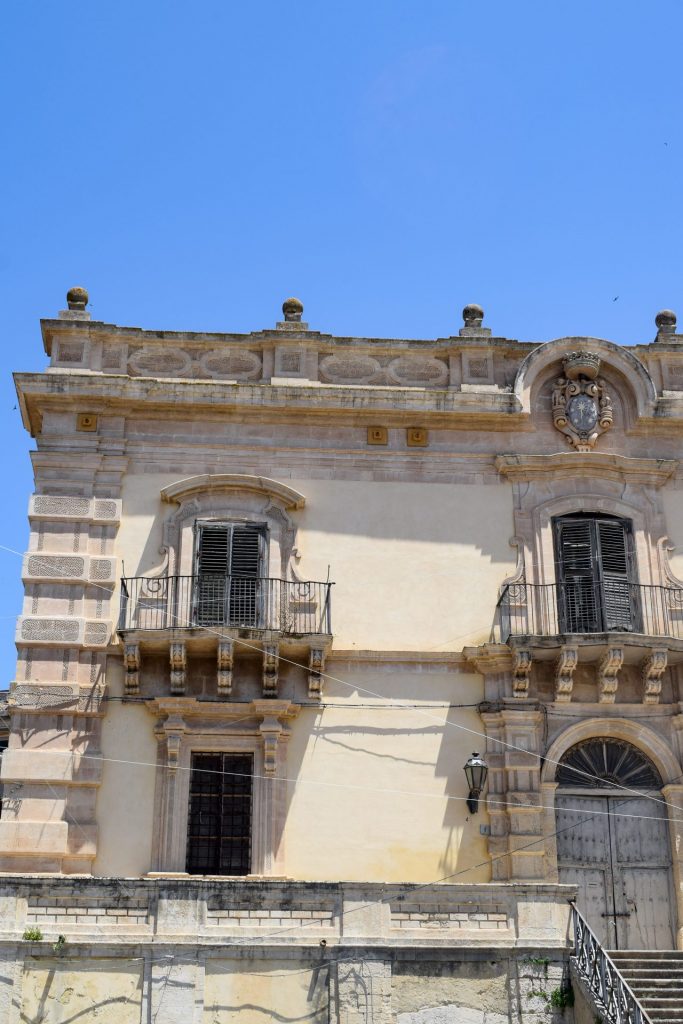
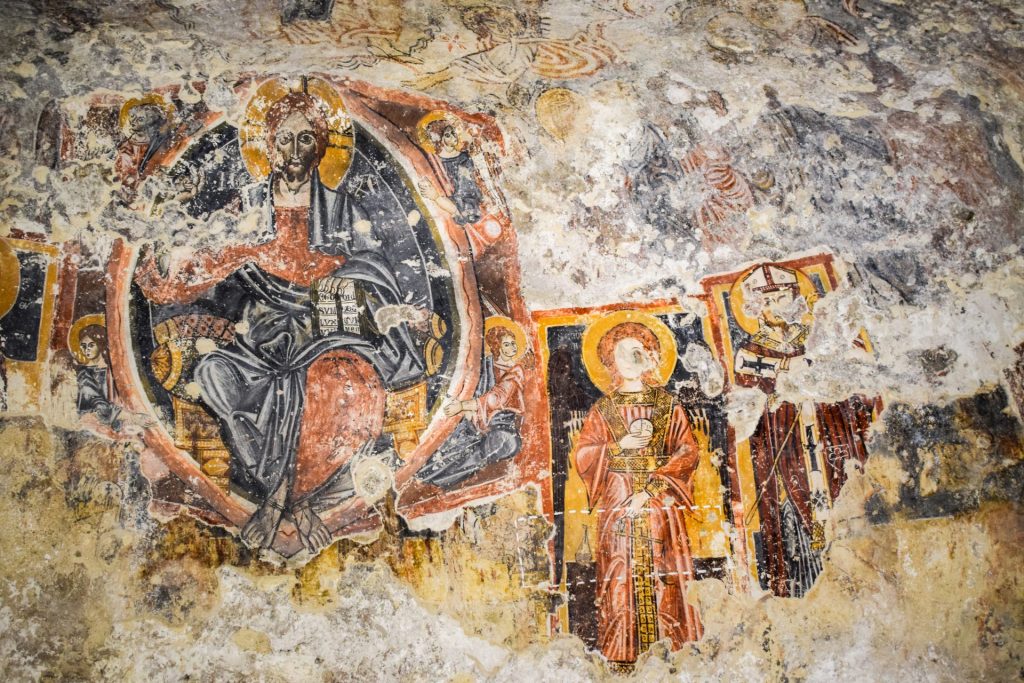
Chiesa di San Nicolo Inferiore
Something of a hidden gem, Chiesa di San Nicolo Inferiore is a ‘rock church’ (literally built into a cave in the 12th century when the Muslims ruled Sicily) where they have uncovered (and continue to uncover) various Byzantine frescos from through the church’s history. Discovered by accident in 1987, it’s still a single room, but worth the 2,50€ entry fee.
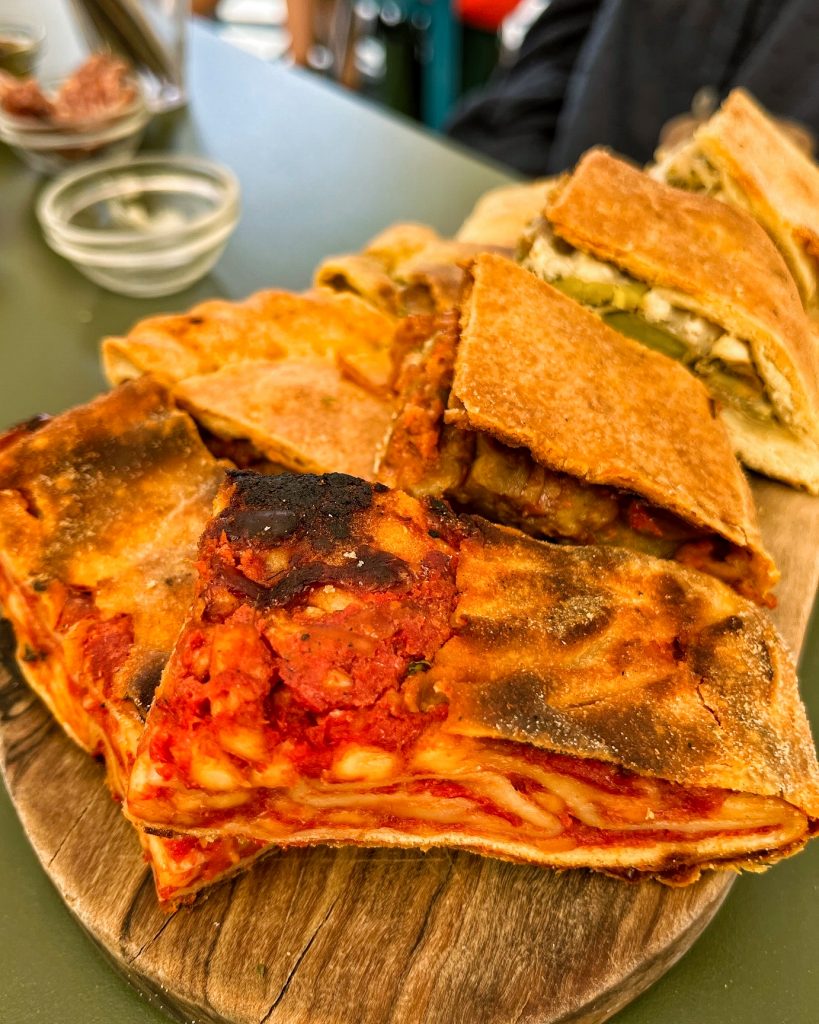
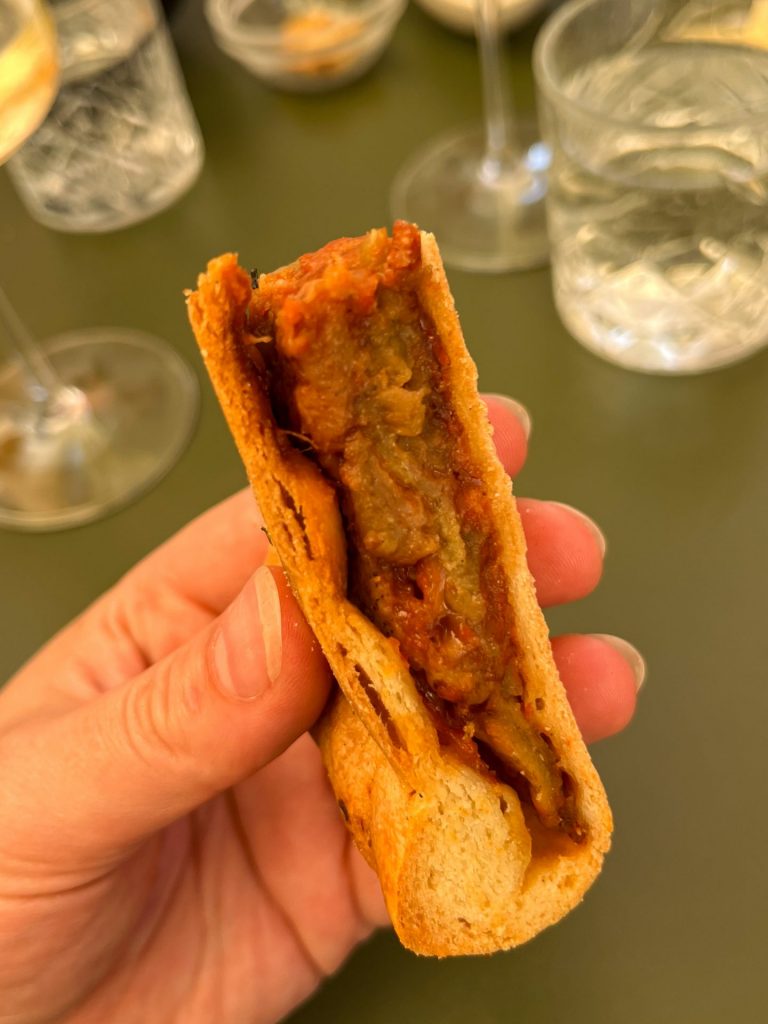
What We Ate
Enoteca Il Barocco
Scacciata is the region’s double-crusted street food, cut into slices it is pie / sandwich like with a variety of fillings, and can also typically filled with sheets of layered pasta, literally like lasagna wrapped in an olive oil pastry. At Enoteca Il Barocco, a wine and apero bar where we had a selection of local bites (cheeses, hams, olives) and a platter of different scacciata we had: caponata (one of my favourites), spinach and sausage (tasty), broad bean and egg (utterly excellent, a typical Sicilian pairing), tomato, cheese and folded pasta (literally a lasagna sandwich, I need more of this in my life), and another pasta one with a sauce of greens. They may sound unusual, especially as the pasta ones come room temperature, but they really were excellent, which is why I recommend Enoteca Il Barocco for a mixed platter where you’re sure to find one to suit everyone!
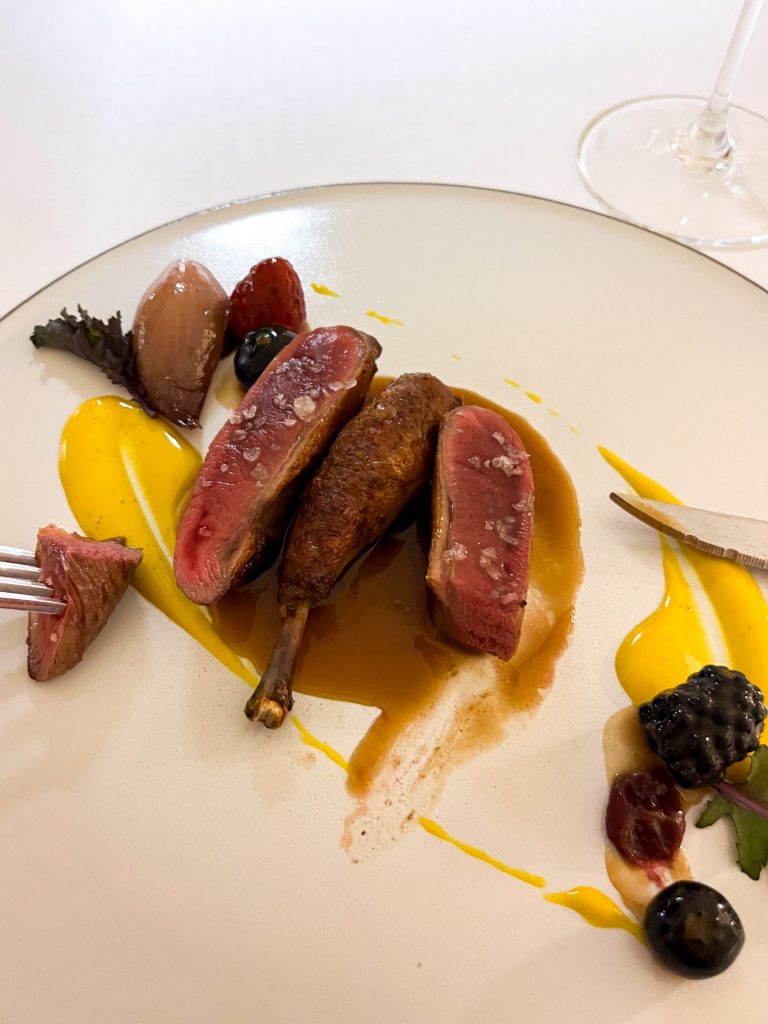
Ristorante Locanda Don Serafino
Ristorante Locanda Don Serafino is a Michelin starred fine dining restaurant that is the place to book in Ragusa Ibla for a very, very special occasion (this trip marked someone’s big birthday!) Nominally the restaurant of our hotel (but as I mentioned, actually 10 minutes walk away) it is set into a beautiful cave with unusual rock into the side of Ragusa Ibla. It has fantastic wine, great staff, several tasting menus, and the choice to go a la carte choosing from each menu. Every course was fantastic (my incredible pigeon dish, perfectly cooked with foie gras and mustard sauces, as well as woodland berries pictured above was particularly memorable) and you should totally book it for a very fine dining perspective on Sicilian cuisine. But if, unlike us, you only have one night in Ragusa there is somewhere else you should book.
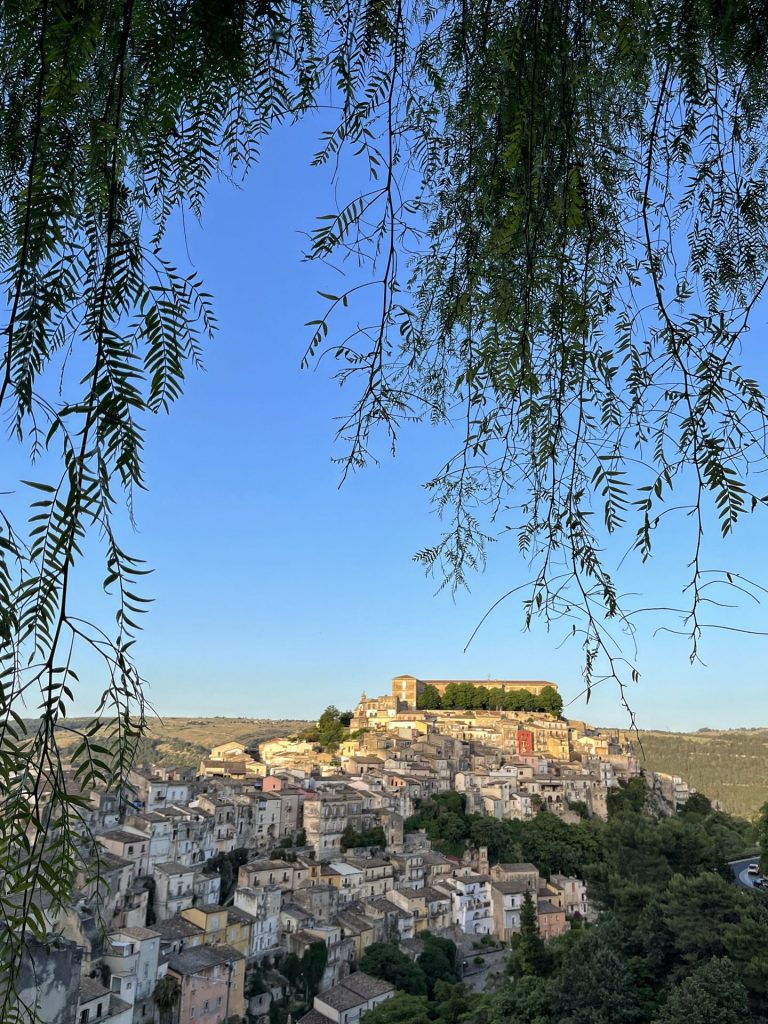
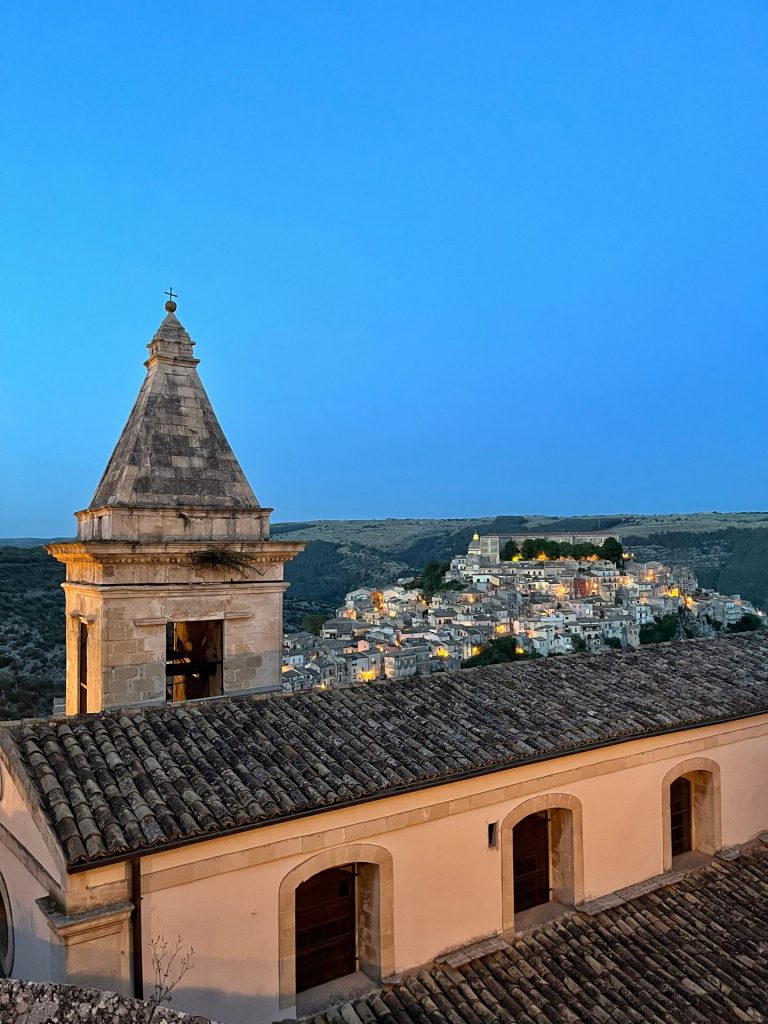
Scale del Gusto
On the left, pictured above we have the view as you climb up from Ragusa Ibla into Ragusa to have dinner on the terrace at Scale del Gusto, and on the right is the view from their terrace once the sun has gone down. And that is not to mention the food that perfectly straddles the line between simple dishes made with local ingredients, and something a little more fancy and refined.
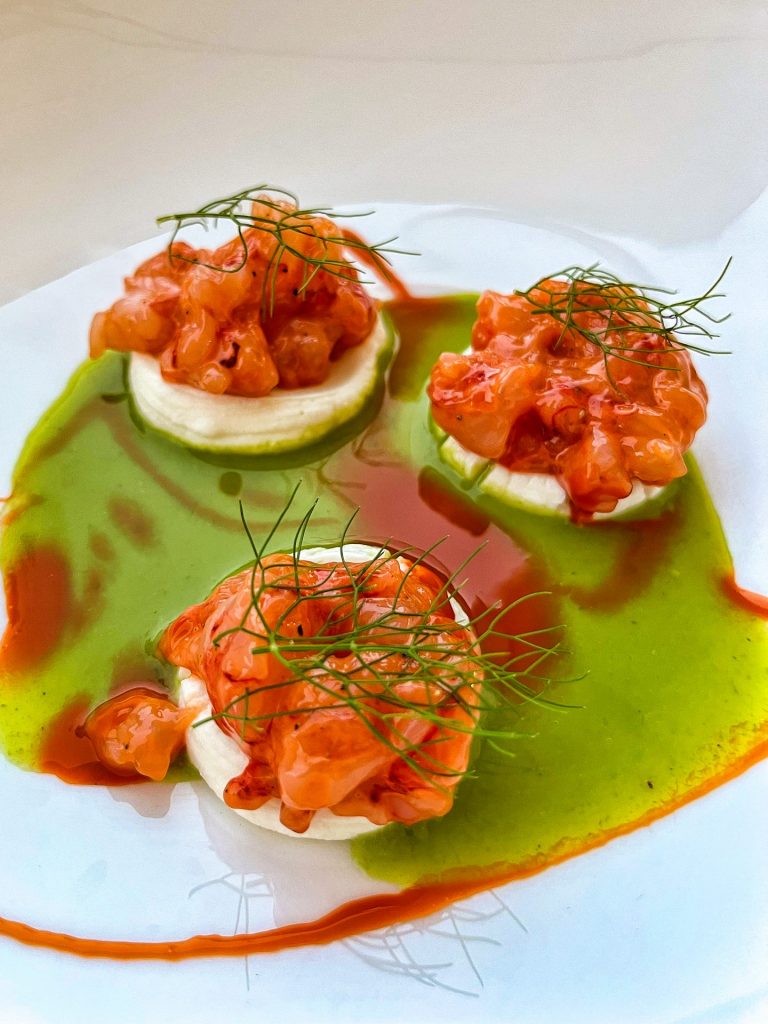
To start, I had a fantastic Mediterranean red prawn tartare on whipped ricotta (and the ricotta in Sicily is so creamy and light anyway it tastes like the ricotta we buy at home whipped before any air is even introduced into it!) served in a pool of wild fennel oil. Light and luxurious!
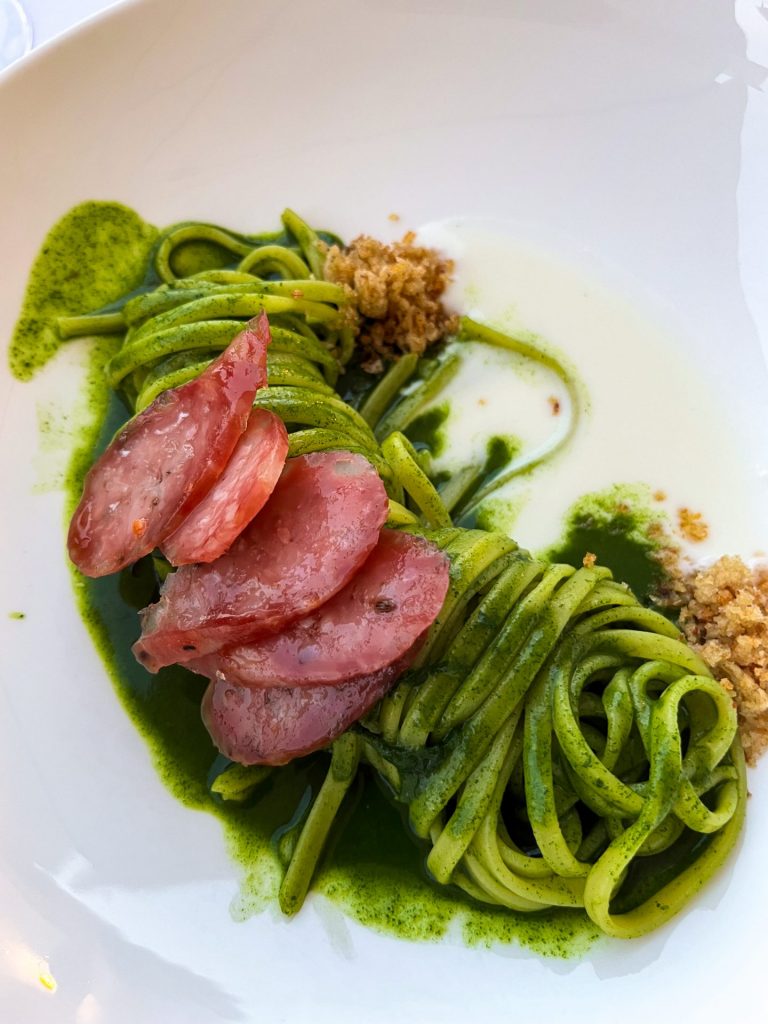
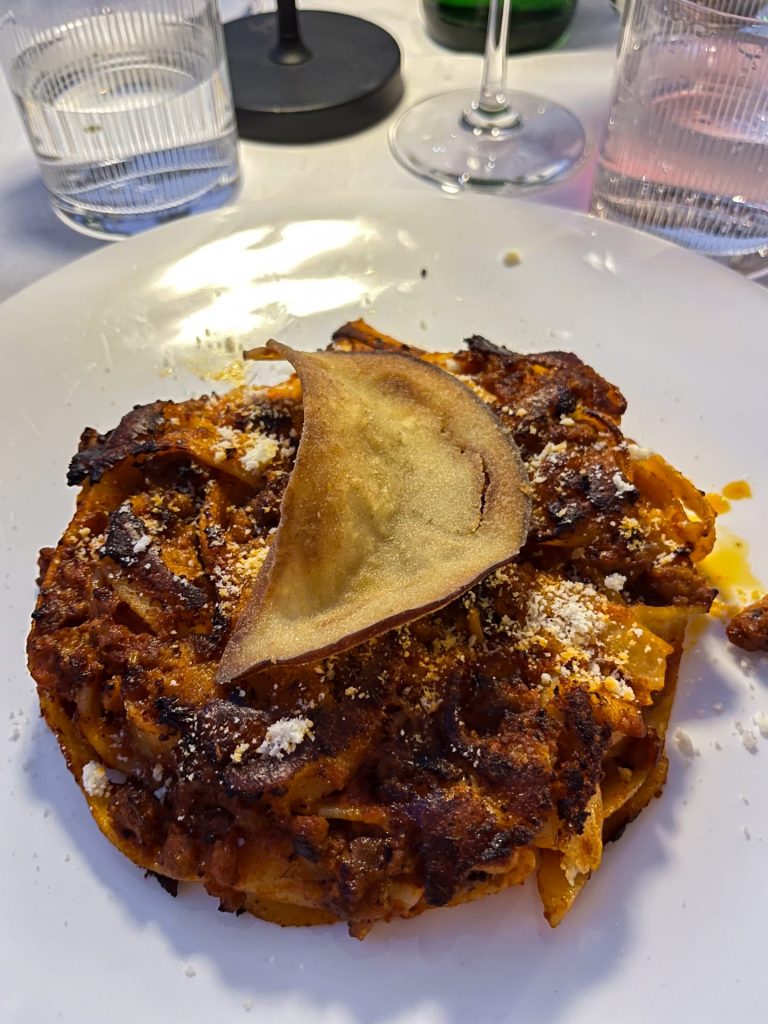
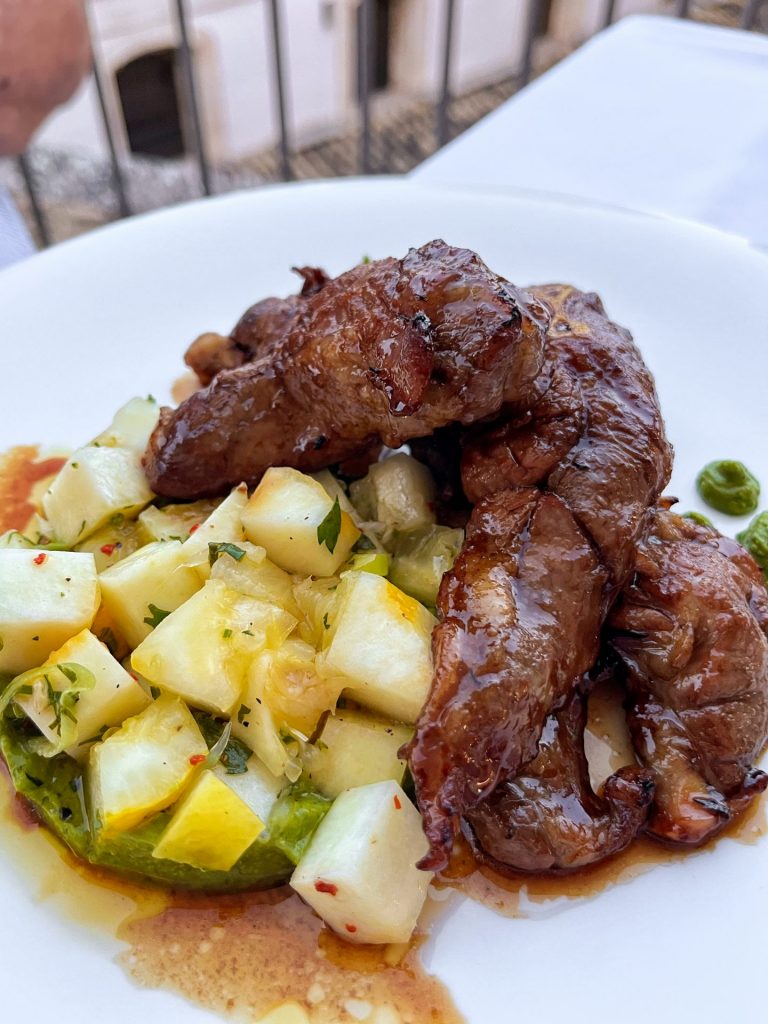
A couple of us had two excellent pasta courses as our mains: a tangle of fresh pasta in a wild greens sauce (so vibrant, so lovely) topped with slow reared sausage and sitting in a puddle of taleggio cheese, and a sausage a fennel ragu-baked pasta which was just on the line of being a little too rich, and just enough.
I also had order-envy of the grilled lamb served with a green sauce and lemon pith salad!
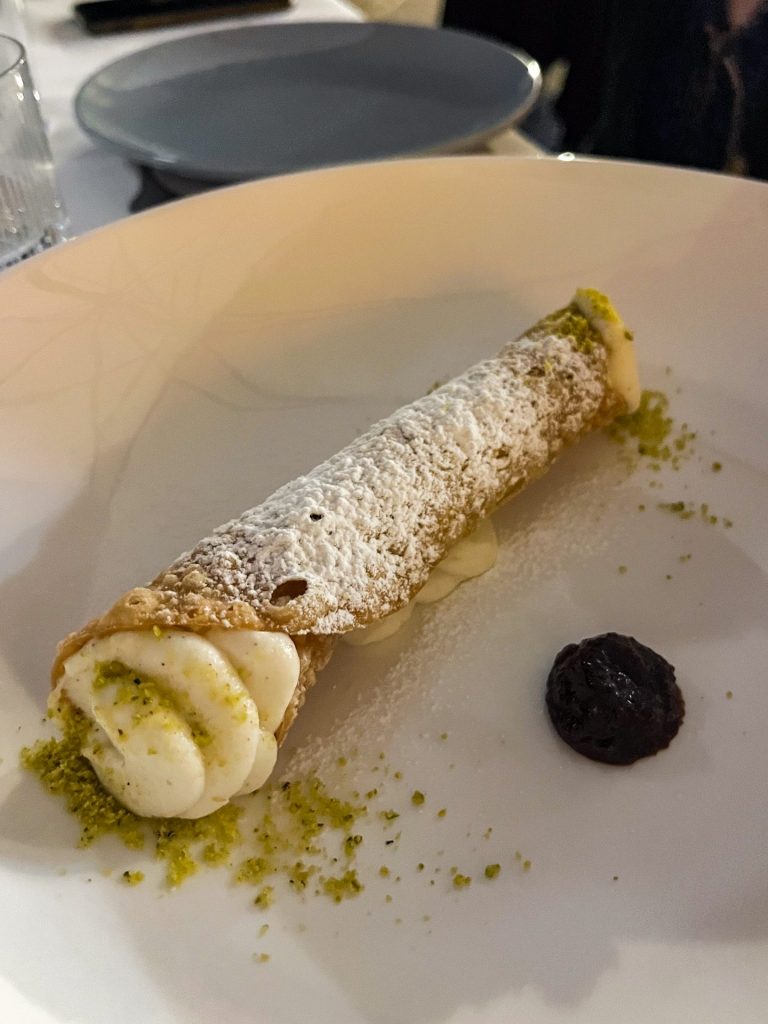
To finish, we shared a couple of their excellent canolo: delicate, crisp, with the ricotta sweetened just enough, and served with a splodge of local carob jam.
For more Sicily inspiration, you can read my essays on Everything We Ate in Palermo and Everything We Ate On Our Sicilian Road Trip I put together for newsletter subscribers by following their links, and you can check our my full Sicily travel section here!

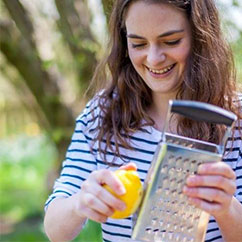
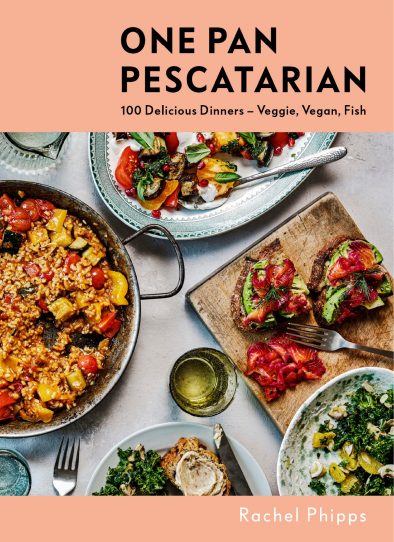



Discussion